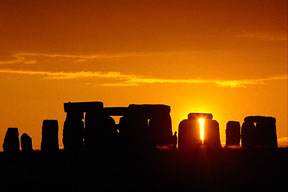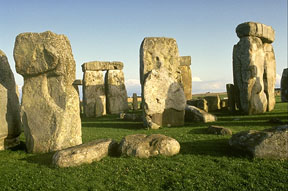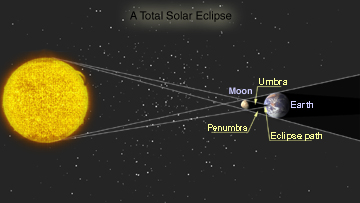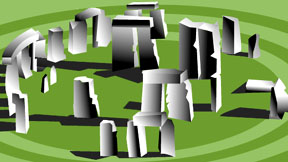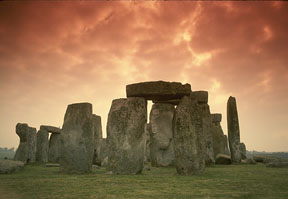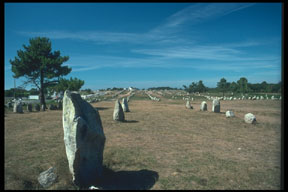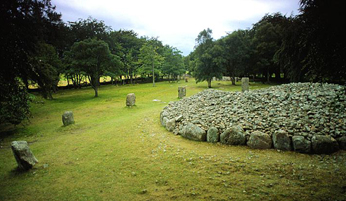Click on image for full size
Windows to the Universe original image
Astronomy at Stonehenge
Some people would say that advanced astronomical techniques were practiced at Stonehenge and other megalithic structures (megalith is Greek for "large stone"). But, it is not likely that ancient observers were able to make advanced predictions such as when lunar and solar eclipses would happen. It is more likely that the astronomical observations made at these megalithic structures were of a simple kind carried out for the religious and ritual practices of the people.Stonehenge does exhibit various alignments with the Sun and the Moon. In fact, the main axis of the monument faces the horizon where the Sun rises on the summer solstice, the longest day of the year. But the axis really only lines up roughly. The Sun actually rises to the left of the Heel Stone (the marker for the axis). And because of the Earth's precession, 4,000 years ago, the Sun would have risen even farther off the center axis. This failure to REALLY line Stonehenge up demands an explanation if these people were practicing exact astronomy. Experts have noted that the axis is off by more than a degree of inacurracy. Good eye sight and a steady hand should have allowed within 1/3 degree of accuracy. It is possible that since these people were only using such knowledge for ritual purposes, their standards of accuracy were different from our own.
It is clear that the placement of stones in Stonehenge was premeditated and that there are alignments to where the Sun and Moon rose long ago. This could have been Stone Age brilliance or it could have been just a moderately observant farmer's knowledge of the sky. We just don't know.
And so most scholars think that Stonehenge and other megalithic structures were built for reasons having to do with religion, ideology, and politics combined with low-level astronomical observation such that would tell the time of the year for agricultural or community celebration purposes.


